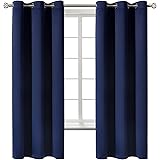Crafting a Cozy Atmosphere: Budget-Friendly Lighting Tips for Your Home
Ever scroll through social media and wonder how some rooms look so inviting? It often feels like magic. Many of us want that same cozy atmosphere in our own homes. Yet, standard ceiling lights often create a harsh, unwelcoming feel. Getting that warm glow can seem expensive or overly complicated. The good news is, achieving beautiful home lighting does not require a huge budget. Simple adjustments can make a big difference. The video above offers fantastic starting points. It shares actionable budget lighting tips. Let us dive deeper into creating your ideal illuminated space.
Define Your Lighting Goals: Task vs. Ambient
Effective lighting starts with purpose. Your space serves different needs. You likely have work areas. These need focused illumination. This is known as task lighting. Ambient lighting fills the remaining gaps. It provides a general glow. Consider where you perform specific activities. Perhaps you read in a specific chair. Maybe you work at a desk. These spots demand task lighting. The overall feeling of the room comes from ambient light. Map out your work zones first. Then, add general illumination. This method ensures both function and comfort.
Banish Eye Strain: Embrace Screen Backlighting
Screens are everywhere in modern life. Monitors and TVs emit very bright light. This brightness contrasts sharply with a dark room. Such contrast causes eye strain. It also detracts from a cozy atmosphere. Blue light from screens can also disrupt mood. Backlighting screens helps balance this. It reduces the harsh contrast. Light bars behind monitors are an excellent solution. They should be set to maximum brightness. This technique softens the viewing experience. It helps protect your eyes. A pleasant visual balance is created.
Harness Light Quality: Harsh vs. Diffused
Light quality dramatically impacts a room. The size of a light source matters. Smaller sources produce harsh light. They create sharp shadows. Larger sources provide diffused light. This light spreads softly. Diffused light is ideal for filling a room. It minimizes harshness. Harsh lights excel at focusing on small areas. They can highlight details. When choosing desk lamps, find a balance. You need enough focus for tasks. Too much diffusion can lack contrast. Too much harshness creates distracting shadows. The right balance supports clear vision. It prevents a “muddy” lighting effect.
Achieve Harmony: Consistent Light Temperature
Light temperature greatly influences mood. This is measured on the Kelvin scale. A higher Kelvin number means colder light. Lower numbers indicate warmer light. Warmer lights foster a cozy atmosphere. Think soft yellows and oranges. Cooler lights feel more sterile. They are often found in offices or hospitals. Consistency is key for harmony. Avoid mixing many different temperatures. A room with varied light temperatures looks chaotic. For coziness, aim for warmer temperatures. The video suggests around 2700K. This creates a beautifully warm and inviting feel. Some might suggest this is only for bedrooms. However, personal preference reigns supreme. A consistent warm temperature promotes relaxation.
Simplify Control: The Power of Smart Bulbs
Managing multiple lamps can be tiresome. Turning each on or off takes effort. Smart bulbs offer a seamless solution. They allow for easy grouping and control. IKEA smart bulbs are a budget-friendly option. They are much cheaper than premium brands. A gateway connects to your internet modem. Light switches then bridge to the bulbs. This setup lets you group lights. You can control task lights separately. Ambient lights can also be grouped. This eliminates individual switching. Smart bulbs also offer dimming. Some even allow color changes. They enhance both convenience and atmosphere. You gain complete control over your lighting. This flexibility truly elevates your space.
Embrace the Process: Iterative Lighting Design
Lighting design is rarely a one-time event. It is a continuous work in progress. Spaces evolve over time. Your needs might also change. Start with essential lighting. Desk lamps and monitor backlighting are good beginnings. Add ambient light sources gradually. Pay attention to dark spots. These areas indicate where more light is needed. A lantern can fill an unexpected gap. Experiment with placement. Adjust light intensity as desired. This iterative approach prevents waste. It allows you to refine your setup. The goal is a balanced space. Take your time to achieve it. Your home’s lighting will grow with you.
Beyond the Workspace: Lighting Every Room
These lighting principles apply universally. Your kitchen can benefit greatly. Task lighting is essential there. Under-cabinet lights illuminate countertops. Pendant lights over an island work well. These lights ensure safety and function. Ambient lights then soften the space. A living room also thrives with layered lighting. Task lights highlight reading nooks. They illuminate specific seating areas. Floor lamps or table lamps provide warmth. Ambient light softens the overall room. Dimmer switches add versatility. They allow mood adjustments. These budget lighting tips transform any area. They help create a cohesive, inviting home.











